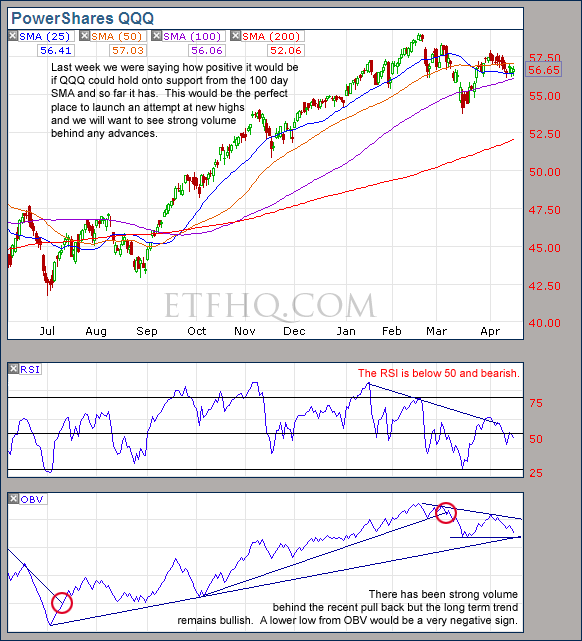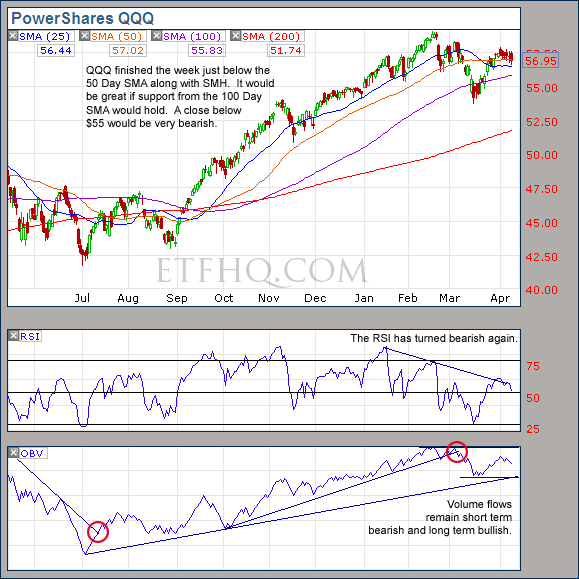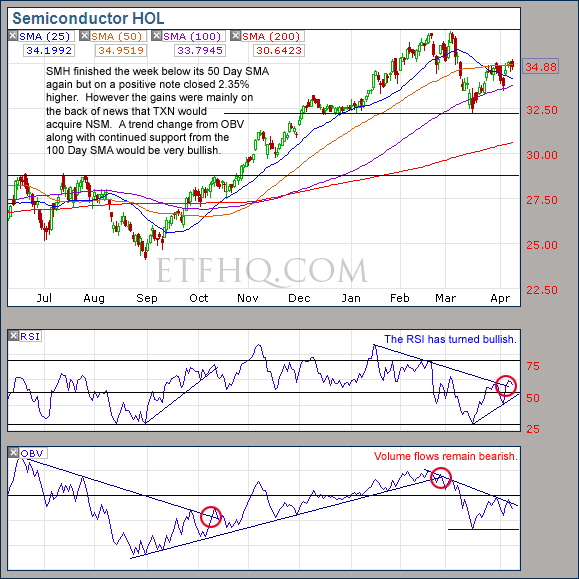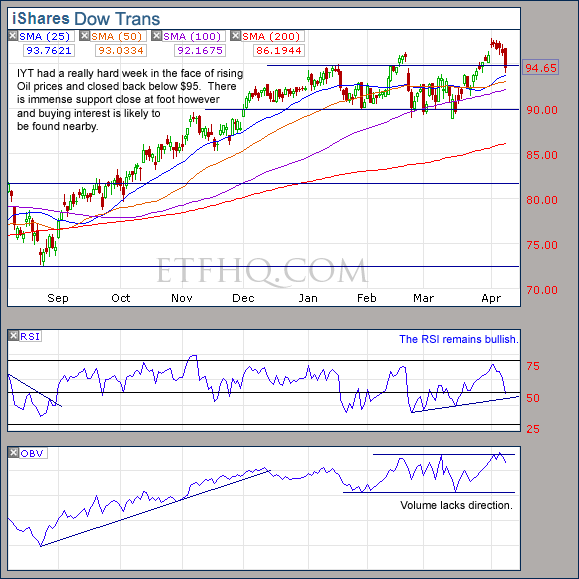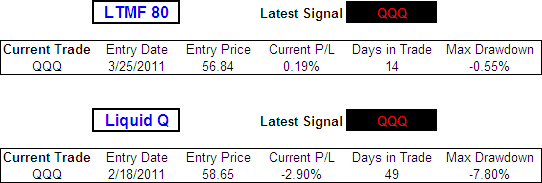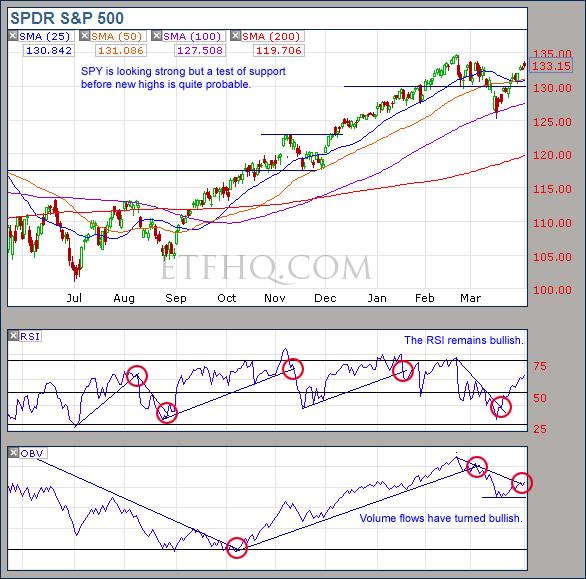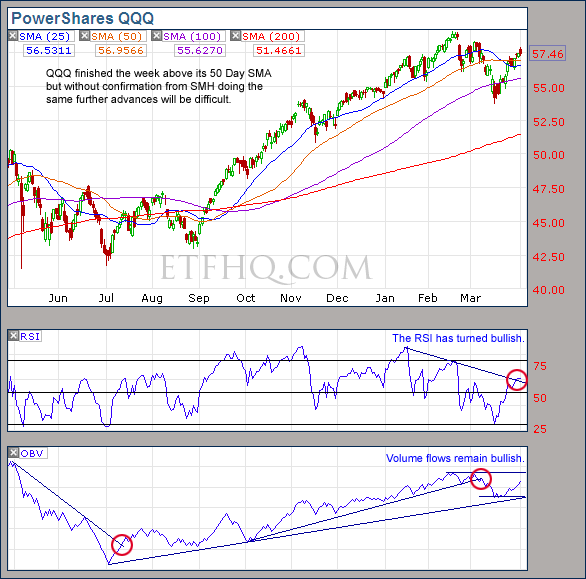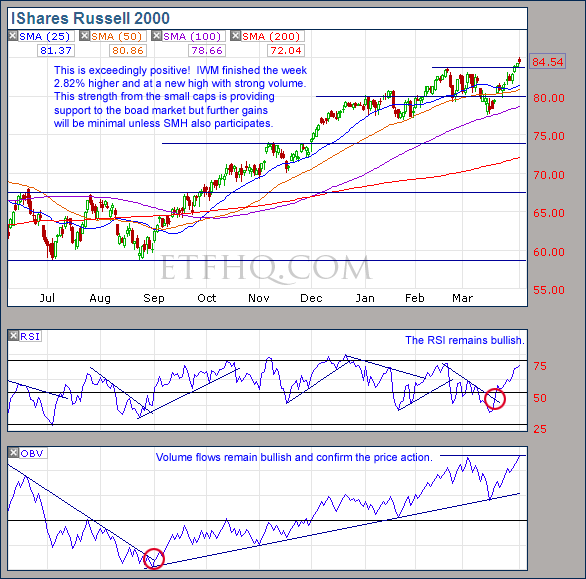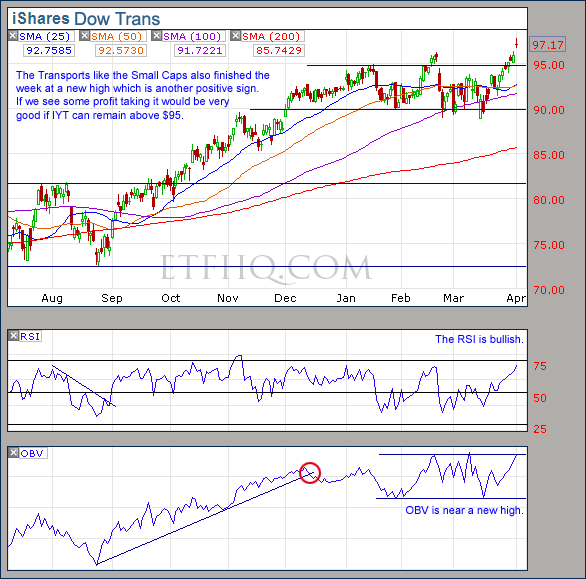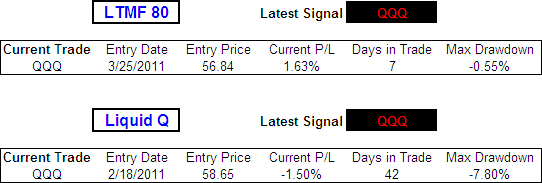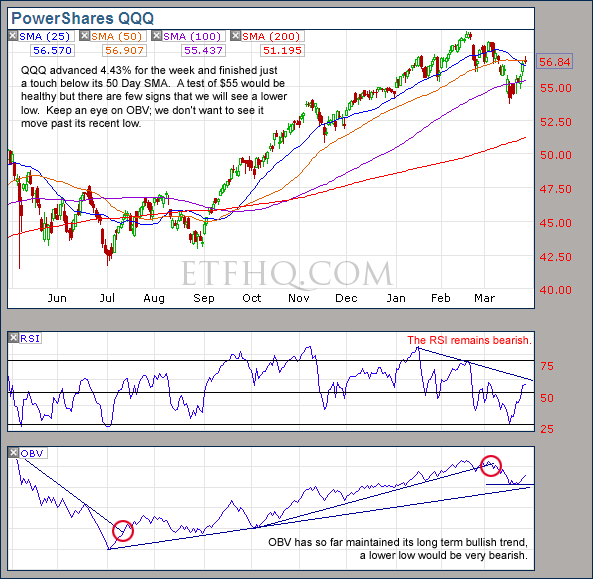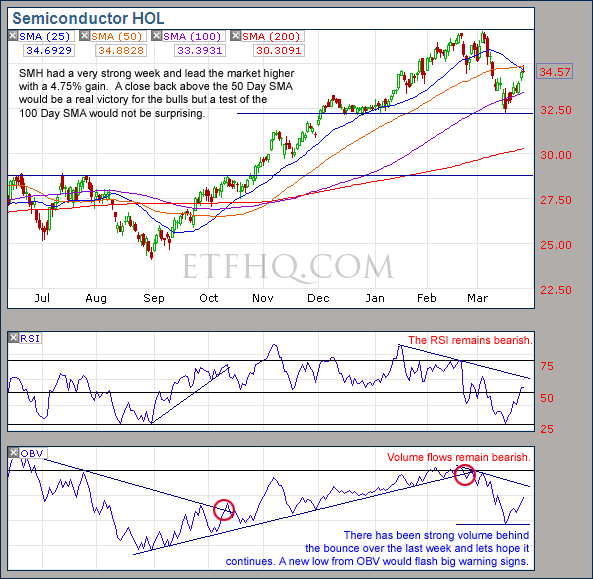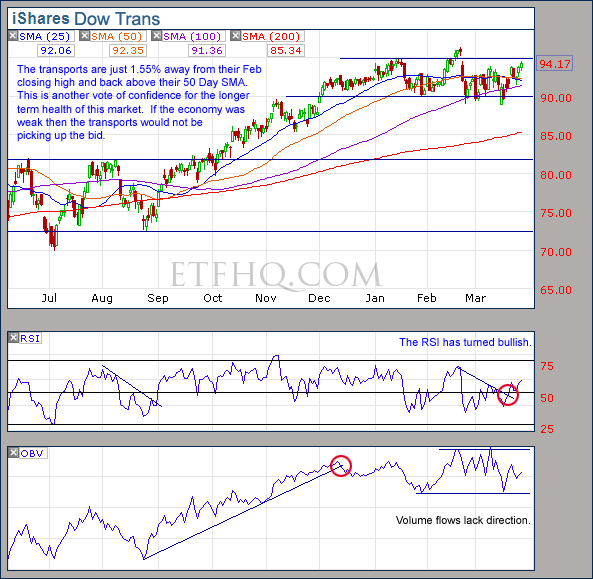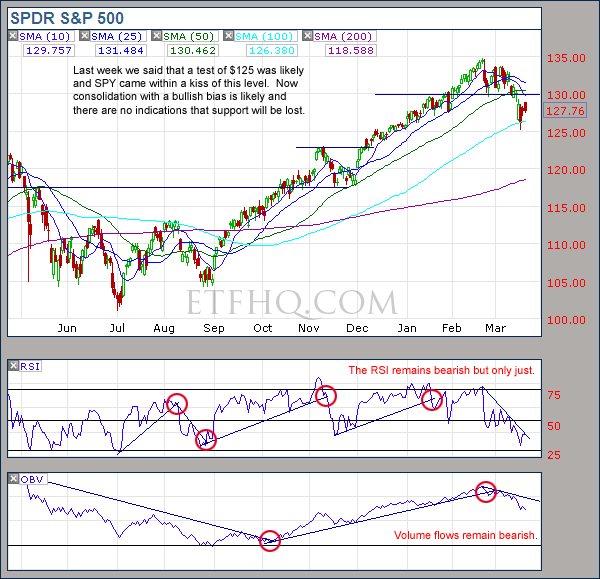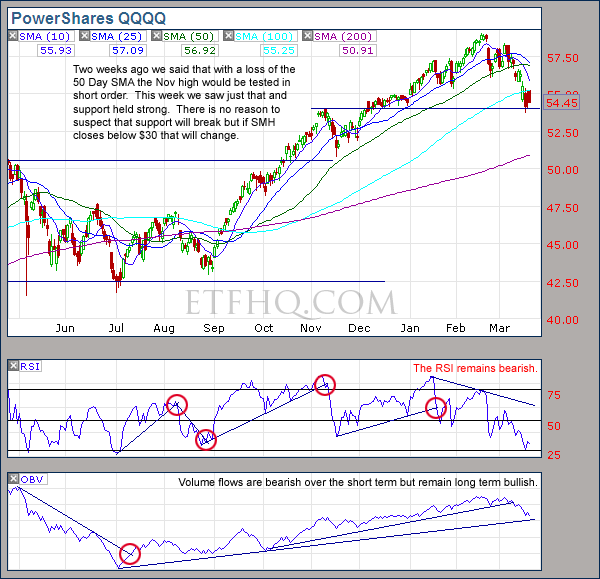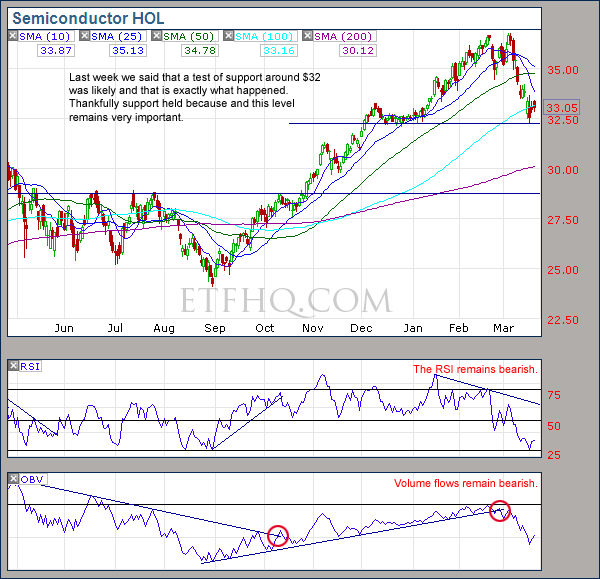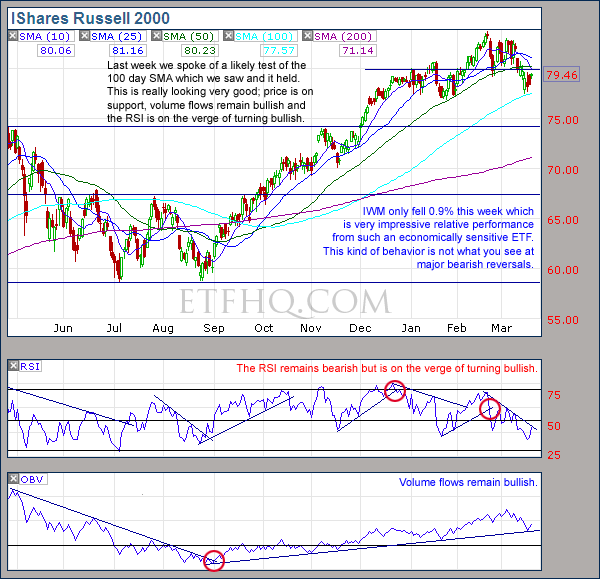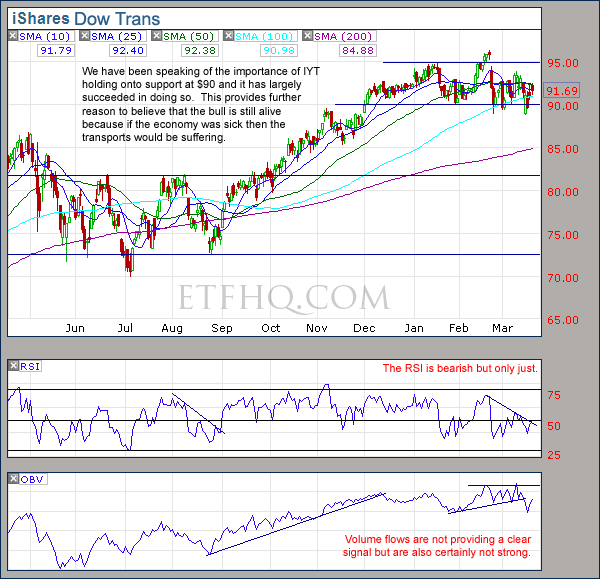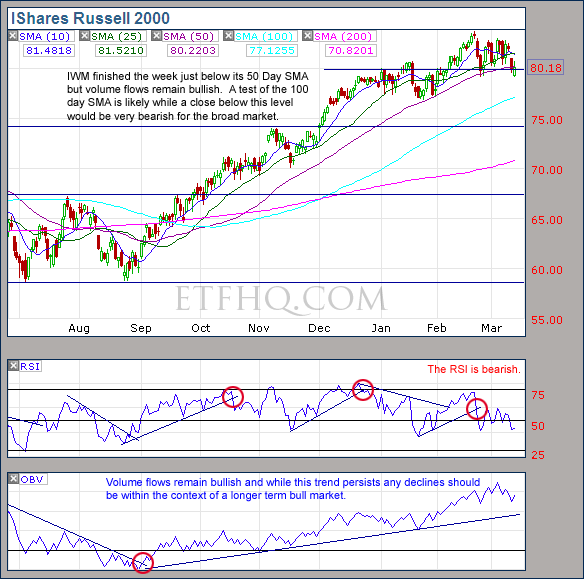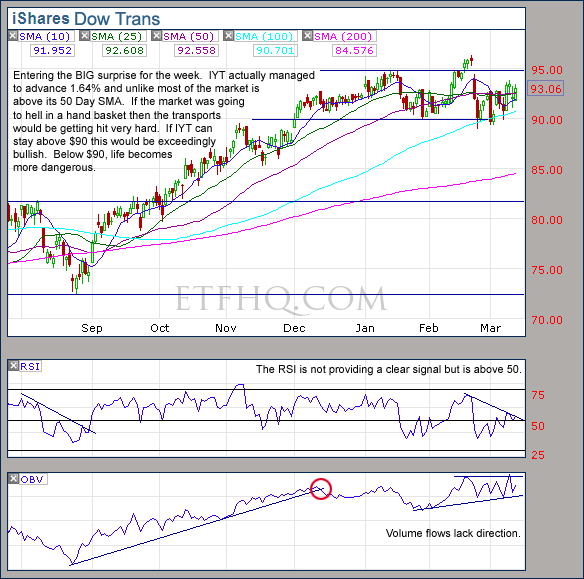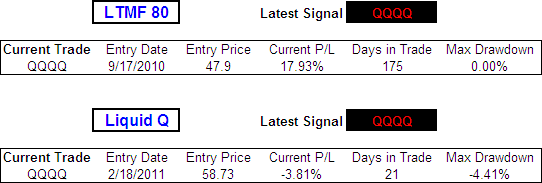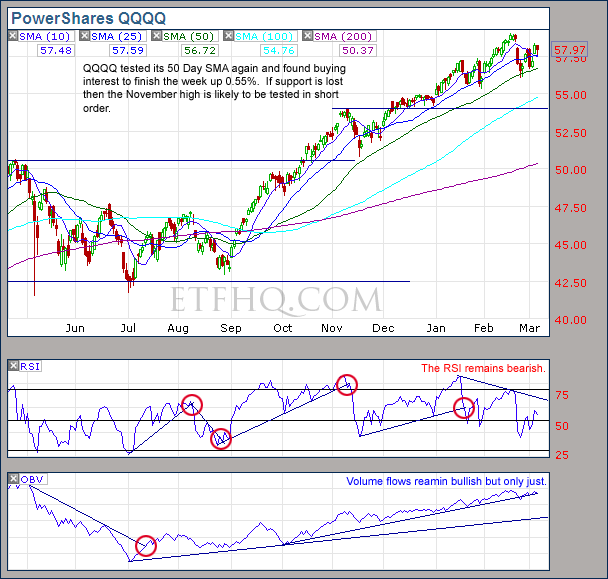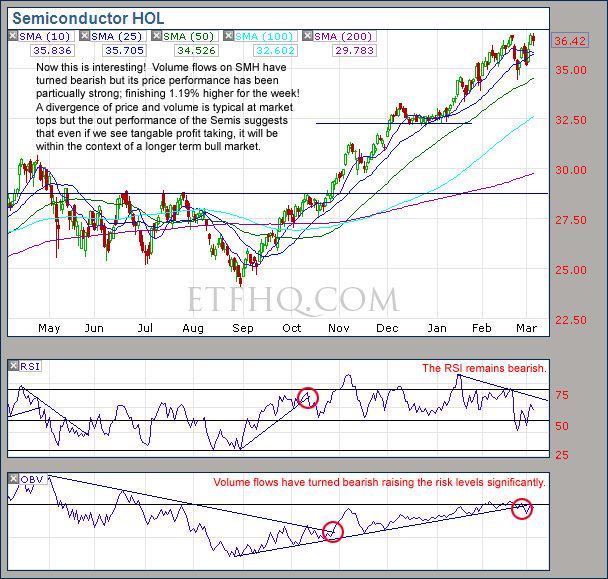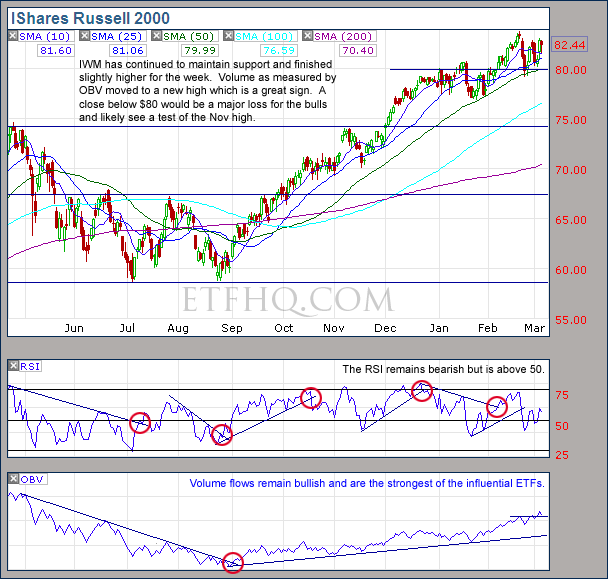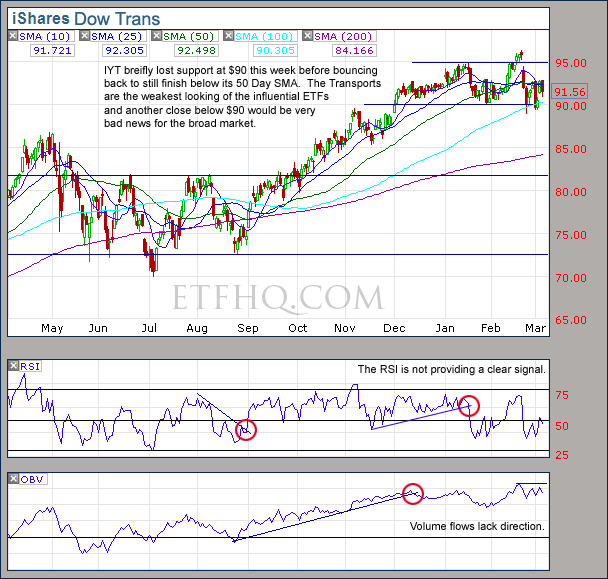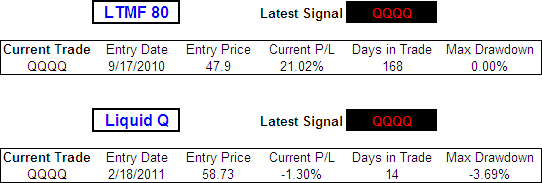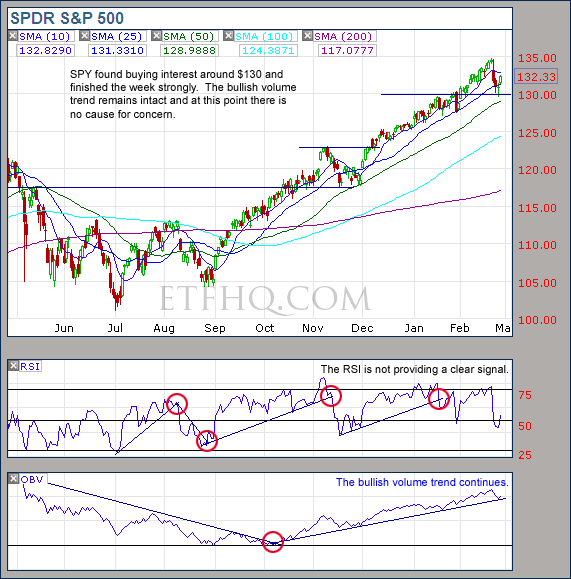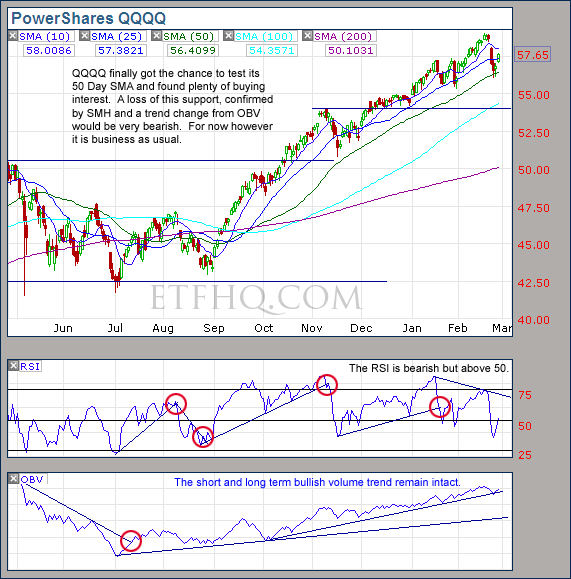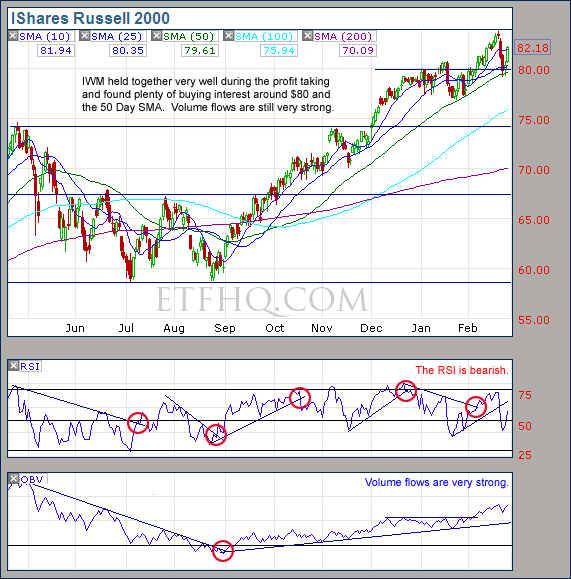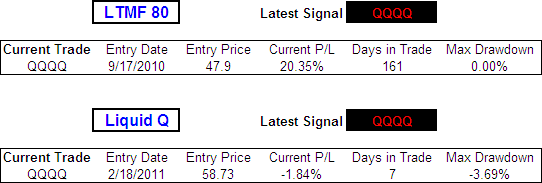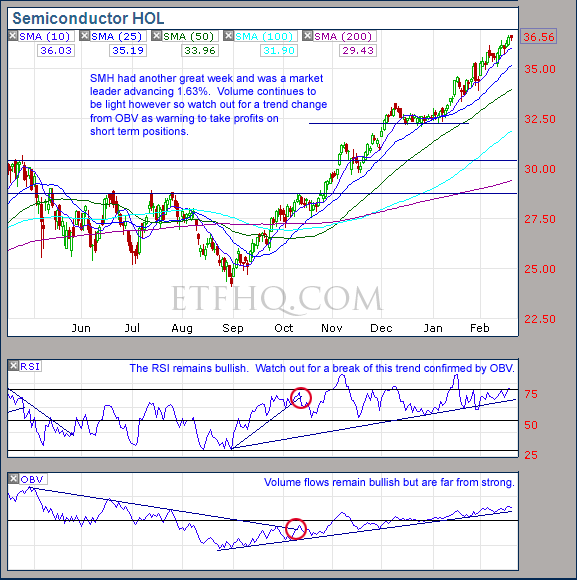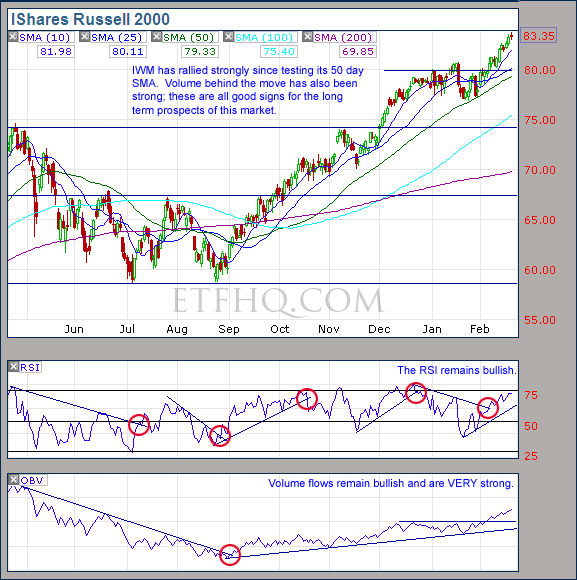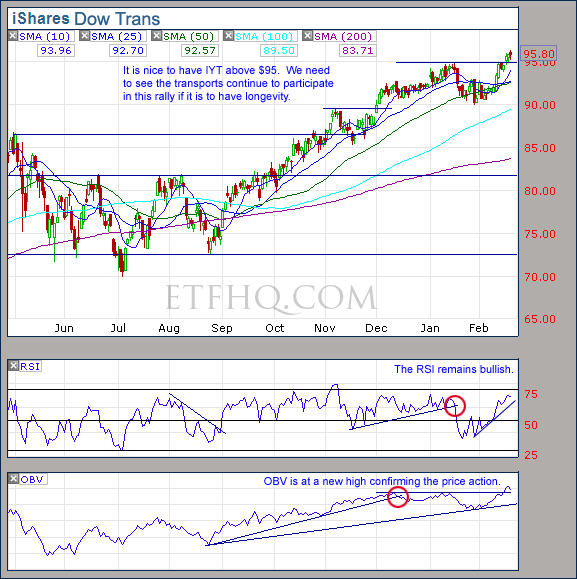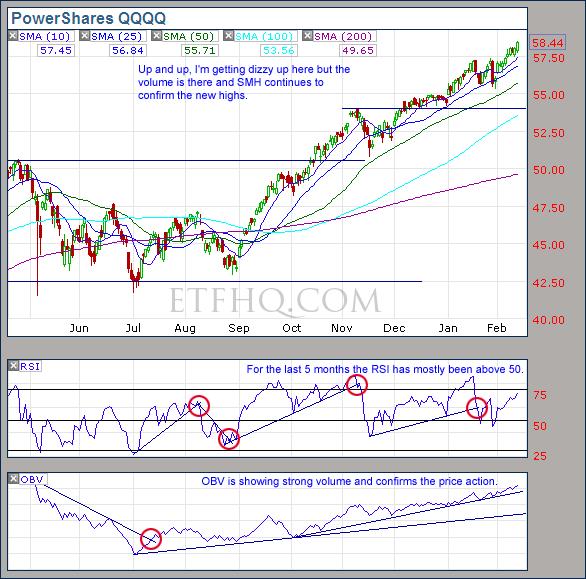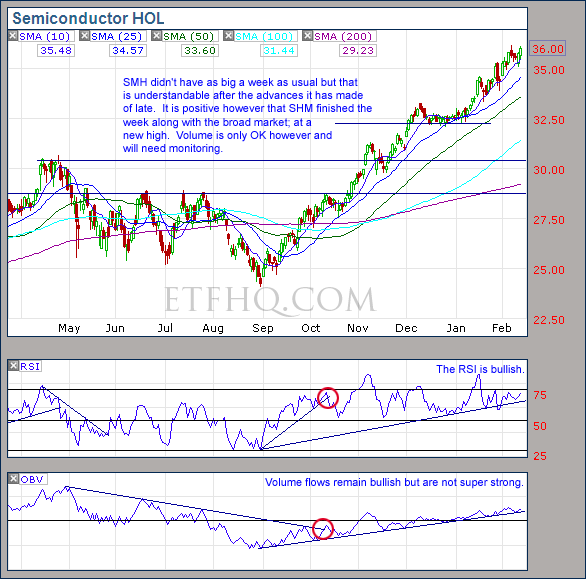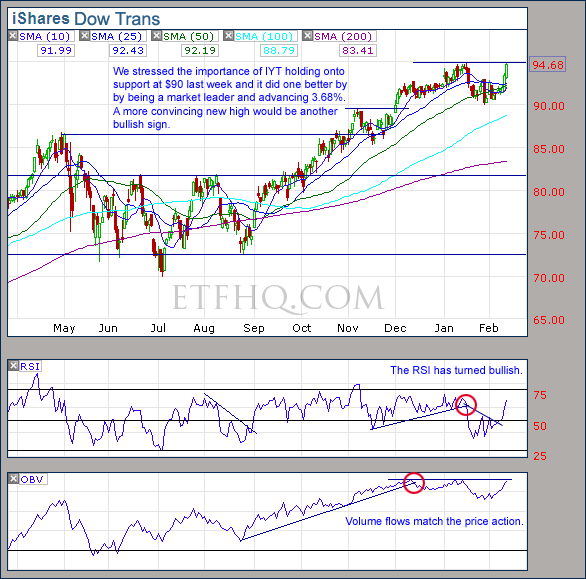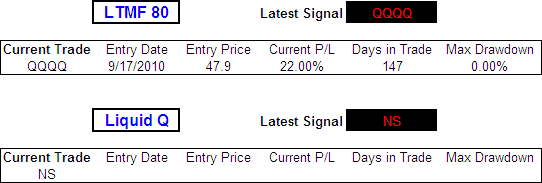April 18, 2011 – 08:40 am EDT
We have been anticipating another test of support before moving to new highs and over the last week we have seen just such a test. So far every single important level has held strong but now it is crunch time. Any further declines will result in major technical damage so the bulls must step up to the plate, but are they capable? Lets take a closer look.
**** Thanks for continuing to spread the word, we grow by word of mouse and that requires your help.
.
ETF % Change Comparison
.

IYT (Transportation) was the only influential ETF to advance over the last week while SMH lead the declines. However over the last fortnight the opposite is true; this indicates a churning and indecisiveness in the market.
Learn more – ETF % Change Comparison
.
![]()
.
A Look at the Charts
.
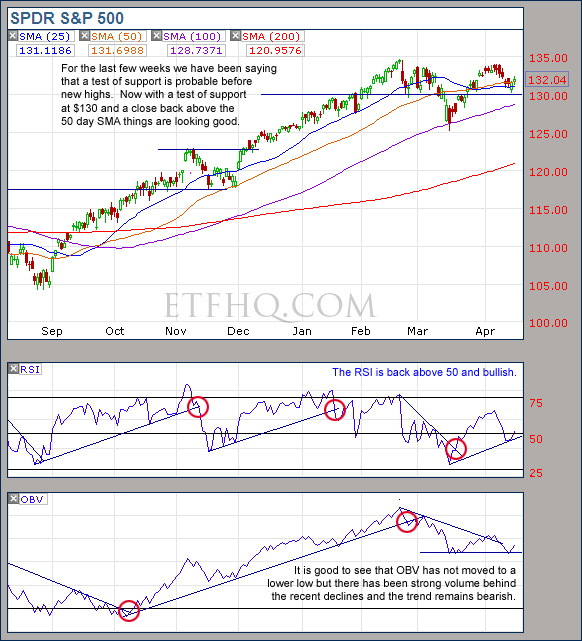
SPY is positioned well to stage a rally. Failure of $130 support would cause major problems.
.
It is great to see QQQ holding on to its 100 day SMA. Now we want to see buying backed by volume.
.
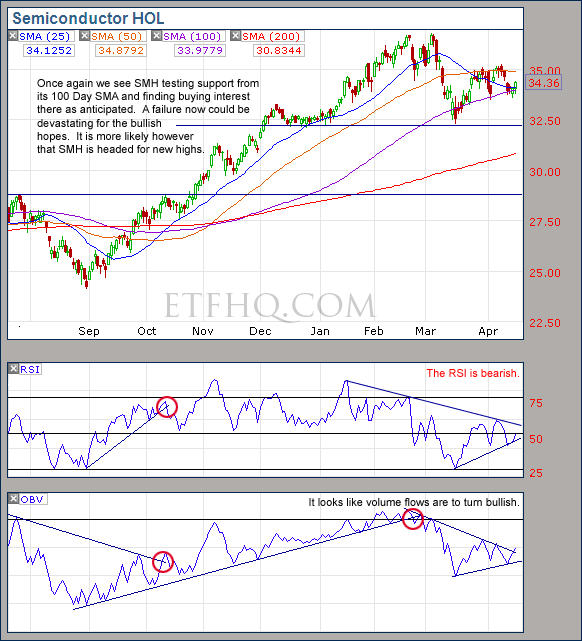
With support underfoot it is time for SMH to put some enthusiasm back into this market and lead the way higher.
.
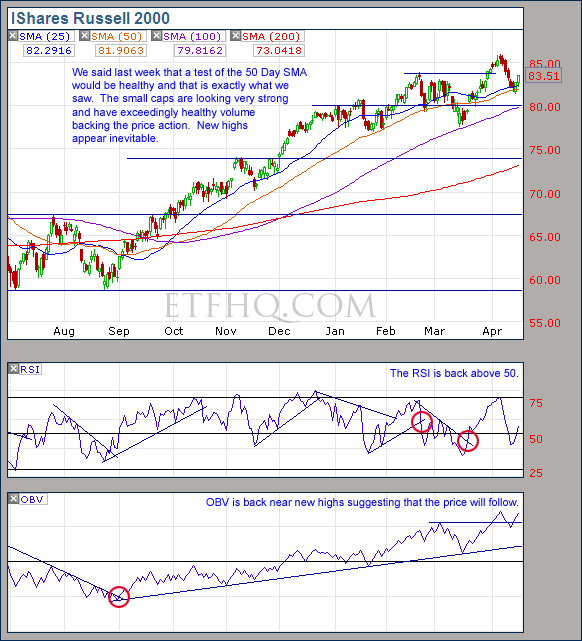
IWM is looking very strong with OBV near new highs and support underfoot.
.
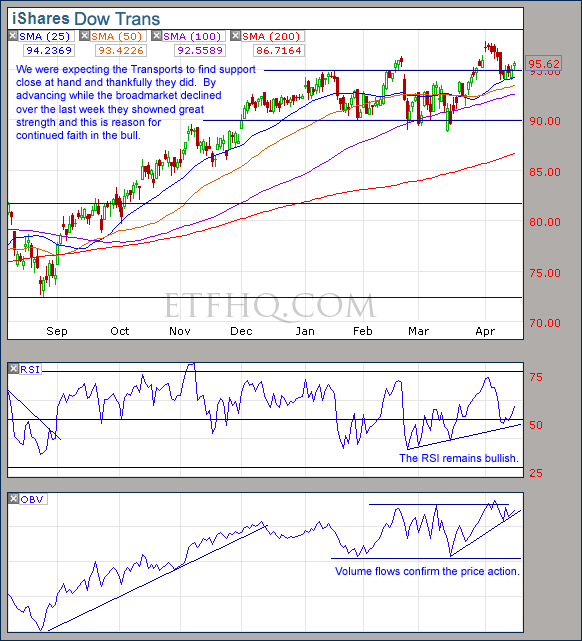
The Transports offer another reason the be bullish.
.
![]()
.
OM3 Weekly Indicator
.

The OM3 indicator is producing mixed signals but has a bearish bias.
Learn more – The OM3 Indicator
.
![]()
.
TransDow & NasDow
.

TransDow – The Transports have again become dominant over the Dow and a new position was initiated on Friday.
NasDow – The Dow remains dominant over the NASDAQ and has been for 126 days now. During this time the Dow has advanced 8.14% and the NASDAQ just 4.82%.
.
What the TransDow Readings tell us:
The TransDow measures dominance between the DJ Transportation Index (DJTI) and the Dow Jones Industrial Average (DJIA). In a strong market the more economically sensitive Transportation Index should be dominant over the DJIA.
Historically the DJTI has been dominant over the Dow 45% of the time. The annualized rate of return from the DJTI during this period was 18.47% with the biggest loss for one trade sitting at -13.27%. The annualized return from the DJIA during the periods it was dominant over the DJTI was just 4.06% and the biggest loss for one trade was -16.13%. A 4% stop-loss is applied to all trades adjusting positions only at the end of the week.
What the NasDow Readings tell us:
The NasDow measures dominance between the NASDAQ and the DJIA. Using the same theory behind the Trans Dow; in a strong market the more economically sensitive NASDAQ should be dominant over the DJIA.
Historically the NASDAQ has been dominant over the DJIA 44% of the time. Taking only the trades when the NASDAQ is above its 40 week moving average the annualized rate of return was 25.47% with the biggest loss for one trade sitting at –8.59%. The annualized rate on the DJIA during the periods it was dominant over the NASDAQ is just 8.88% and the biggest loss for one trade was –12.28%. A 8% stop-loss is applied to all trades adjusting positions only at the end of the week.
.
![]()
.
LTMF 80 & Liquid Q
.
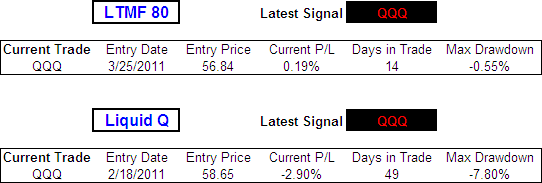
Both LTMF 80 and Liquid Q continue to hold open positions in QQQ.
.
Historical Stats:
.

.
How The LTMF 80 Works
LTMF stands for Long Term Market Forecaster. It reads volume flows relative to price action and looks for out performance of volume measured on a percentage basis over the prior 12 months. During a sustained rally the readings will reach high levels (near 100%) making it imposable for the volume reading to always outperform price so any reading above 80% will maintain the buy signal. This system has outperformed the market over the last 10 years but performance has been damaged by some nasty losses. It only produces buy signals and only for QQQ.
How Liquid Q Works
Liquid Q completely ignores price action and instead measures the relative flow of money between a selection of economically sensitive and comparatively stable ares of the market. It looks for times when the smart money is confident and and can be seen by through volume investing heavily is more risky areas due to an expectation of expansion. This system has outperformed the market over the last 10 years and remained in cash through most of the major declines. It only produces buy signals and only for QQQ. We will provide more performance details on the web site for these systems soon.
.
![]()
.
Summary
Indications are that support has been found and that the bulls are soon to take control once again. However there is not much time available to linger so if SMH and QQQ close below their 100 Day SMAs the risk level will rise significantly. If IWM were to then close below $80 we will have officially been caught in a bull trap.
Any disputes, questions, queries, comments or theories are most welcome in the comments section below.
.
Cheers
Derry
And the Team @ ETF HQ
“Equipping you to win on Wall St so that you can reach your financial goals.”
.
![]()
.
A Humble Request
The first symptom for most people is death and 17 million people die from it every year which is 34% of funerals globally!! If you don’t know anyone who has been lost to heart disease then chances are one day you will.
I’ve set up a site at http://www.heartracer.org.nz/derrybrown/
Please support me as I participate in the Auckland Marathon in an effort to raise funds for The Heart Foundation.
The goal is to raise $10,000 which is just $10 form 100 people but to do that I will need you help!
